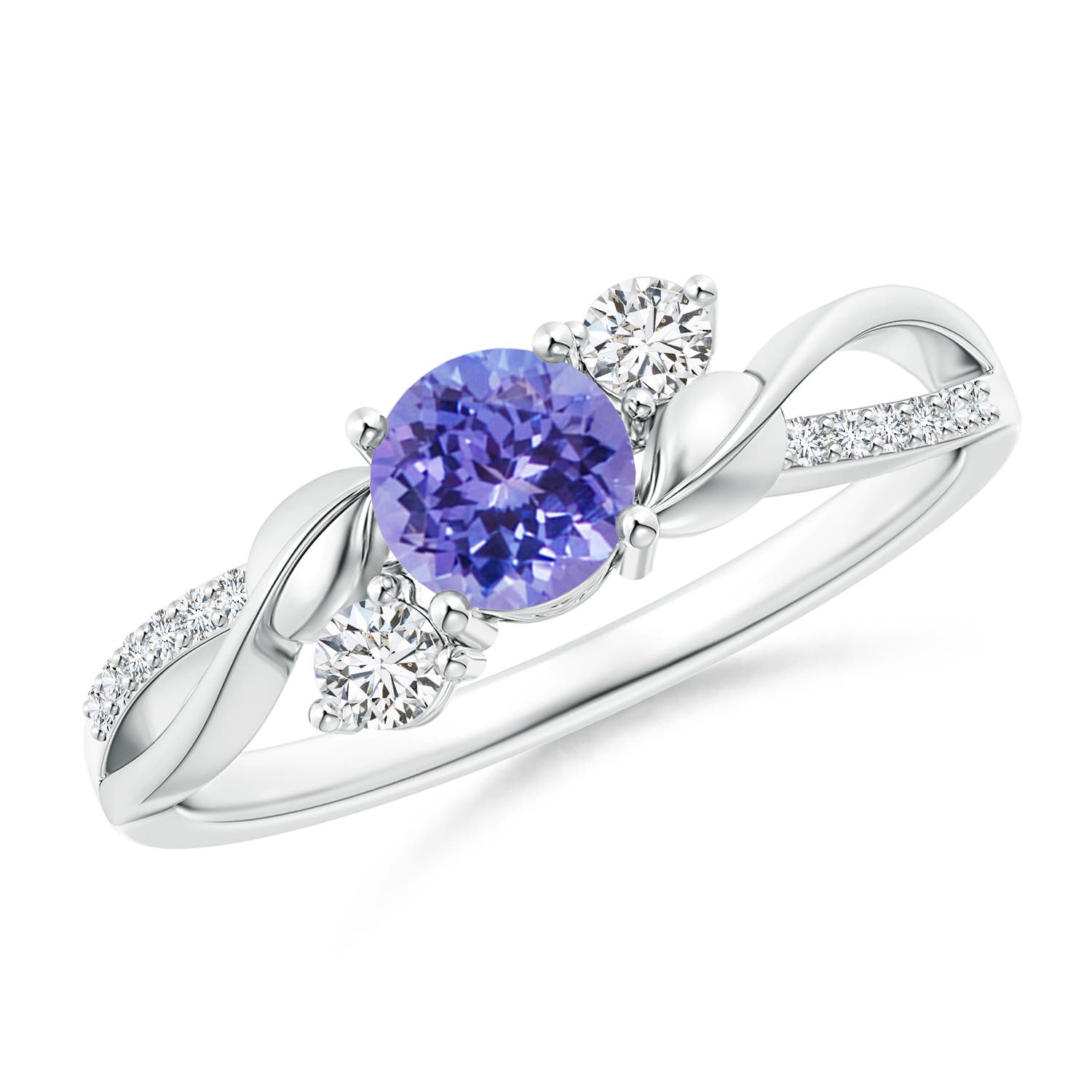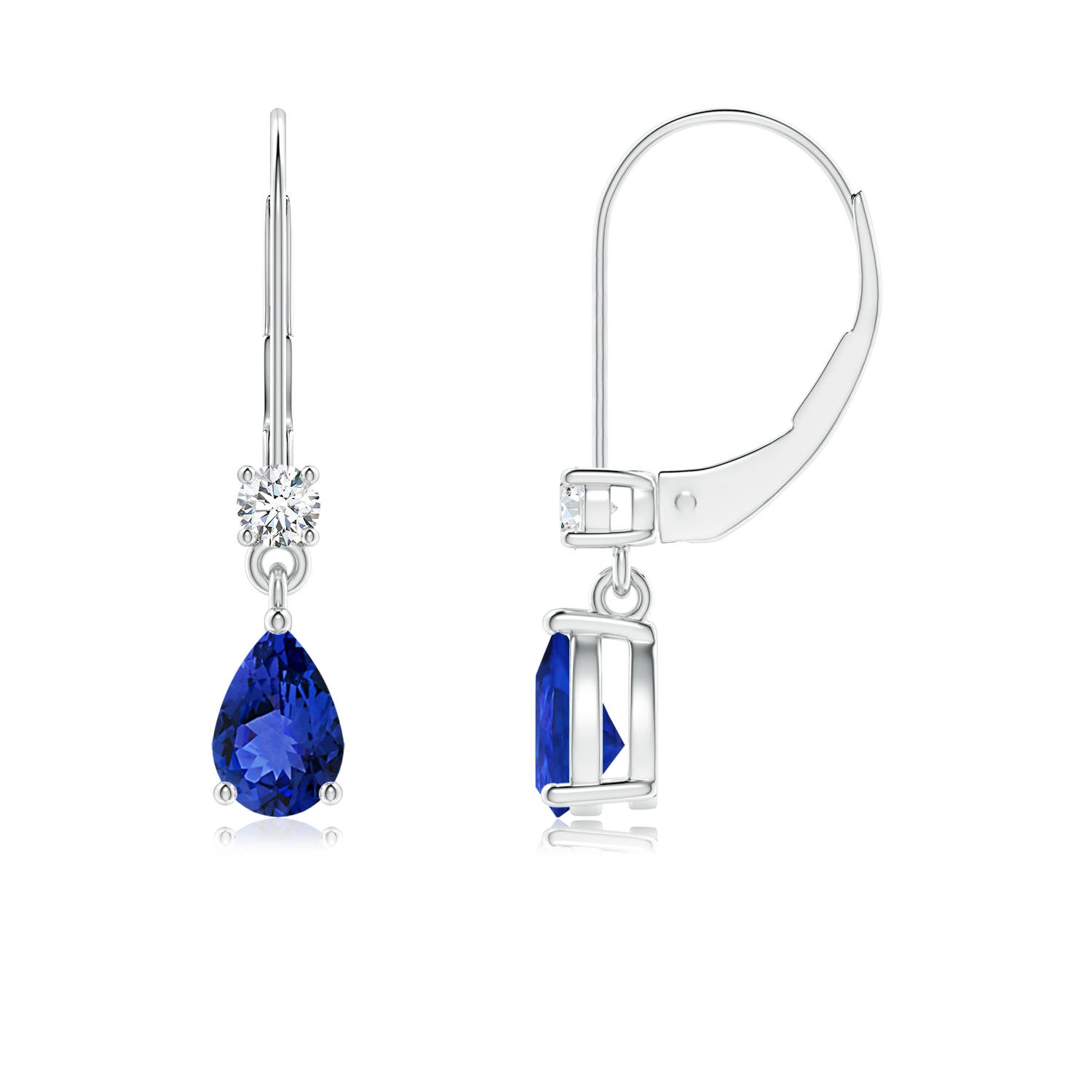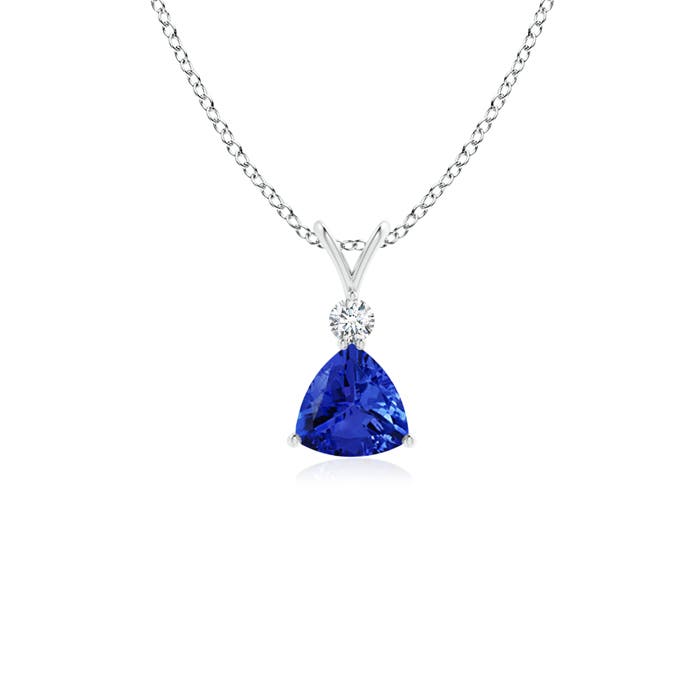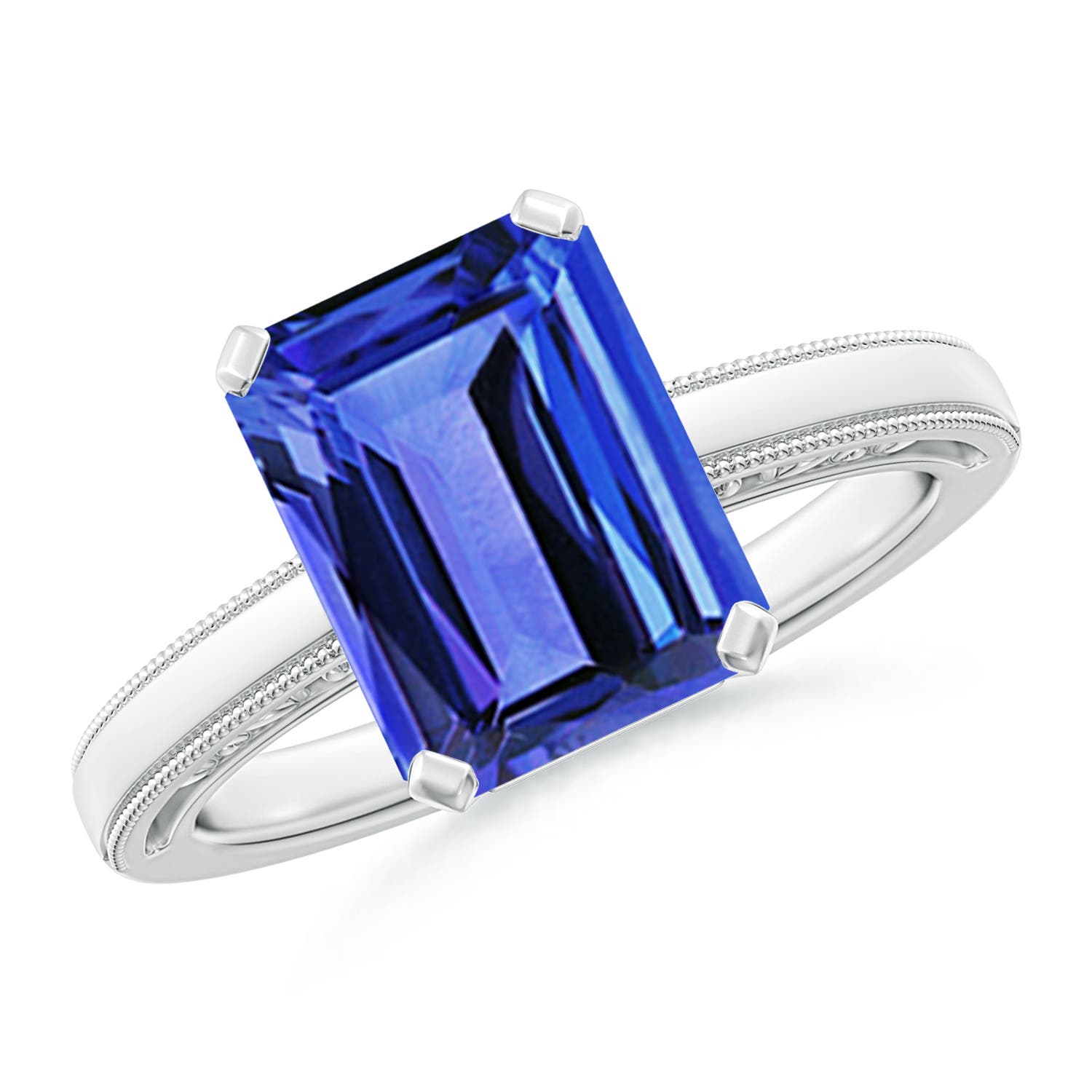The December birthstone, tanzanite, is an exquisite gemstone with an iridescent shine. It radiates lilac, purple and blue hues of color beautifully in different lighting conditions. When viewed under fluorescent light, the blues appear brighter, whereas violets appear more vivid under incandescent light. Tanzanites are a variety of mineral zoisite and get their colors from vanadium. Named after the country of origin, tanzanite can broadly be divided into two types based on their color – blue-dominated or violet-dominated. Wearing this gorgeous purple gemstone will surely make you feel like royalty! And if you are keen to know about the different types of tanzanite available, then keep on reading!
What Makes Tanzanite Special?
First unearthed by a Masai tribesman in 1967, at the foothills of Merelani in northern Tanzania, tanzanites are to this day, found in the first place they originated. These are precious gems, even more so than diamonds! No wonder it’s the gem that marks the 24th wedding anniversary.
The majestic tanzanites are pleochroic, which means you can tilt it to see the three distinct colors – violet, purple and blue.
History of the Tanzanite Gemstone
Since this gem was recently discovered, there aren’t many legends or superstitions surrounding it. However, the people of Tanzania believe it signifies happiness and a positive outlook on life.
The Smithsonian Institution boasts of an impressive tanzanite collection of one massive faceted stone that comprises 122 carats and a rare cat’s eye tanzanite of 18 carats.
Different Types of Tanzanites
Based on the four C’s – Color, Clarity, Cut and Carat, tanzanites are distinguished into different quality categories.
1. Heirloom (AAAA)
Only the top 1% of tanzanites in the world make it to this category and are extremely rare to find. Their finish is flawless, with no visible inclusions. They also exhibit a rich violet-blue color.
2. Best (AAA)
The top 10% of tanzanites fall in this category. These purple gemstones are ‘eye-clean’ and have a beautiful deep blue color.
3. Better (AAA)
Tanzanites in this range are on the more affordable side. This type includes the top 33% of available tanzanites. A few inclusions are visible and the color is less intense than AAA and AAAA types.
4. Good (A)
This category includes the most affordable tanzanites in the top 75%. Slight to moderate inclusions may be visible when you look at these gemstones.
Types of Tanzanites Based on Color
Zoisite crystals come in many colors, like blue, violet, green, brown, pink, yellow, grey, and colorless. Tanzanites are blue zoisite crystals. These colorful blue crystals have various hues and tones to them. The more the saturation of blue, the rarer the gemstone and the higher its value becomes. A deep blue represents the best quality.
- Saturation– or the depth of color is how much the hue fills the gemstone. Based on its brightness and intensity, each tanzanite gem is given a number grade from 1 to 6. Gems graded above 4 have a purer color, whereas gems graded as 3 are affected due to gray and brown undertones. The finest quality is reached at a saturation level of 6.
- Tone- or the lightness or darkness is graded between 2 to 8. 1 indicates colorless and 0 is black. The darker the tanzanite, the higher the grade.
Types of Tanzanites Based on Clarity
A gemstone’s quality is assessed by its number of flaws or inclusions. However, it is harder to spot flaws when it comes to colorful gemstones like tanzanite. According to the GIA (Gemological Institute of America), tanzanite is a type 1 gemstone, meaning its quality falls in the range of internally flawless.
- IF (Internally Flawless) – No visible inclusions. Inclusions are present when magnified to 10x.
- VVS (Very Very Slight Inclusions) – No visible inclusions. Tiny specs are visible when magnified to 10x.
- VS (Very Slight Inclusions) – Inclusions are slightly more pronounced but not that noticeable.
- SI (Slightly Included)- Inclusions are visible at the crown of the gemstone.
- I (Included)- Inclusions are visible even to the untrained eye.
Tanzanite Cut
Tanzanite’s ability to sparkle from all directions makes cutting and maintaining the same sparkle even harder. To cut it right requires years of experience and knowledge. An excellent cut can make a stone low in color look far more valuable than it is and a poor cut can even make the highest quality tanzanite gem look inferior.
Planning to get a tanzanite ring for yourself or a loved one? if you notice light glistening and bouncing with your movements, it means that the cut is perfect! This is also an excellent way to tell if your tanzanite is real or fake.
Purple tanzanite is much easier to cut than its blue counterpart, as blue is located on the short axis of the gem, making it much more challenging to cut.
Types of Tanzanite Cuts
- Diamond cut – An elegant round cut based on symmetry and proportion. It comes in both temporary and traditional styles.
- Oval cut – This cut gives a classier and more sophisticated look. It also makes the tanzanite gemstone look bigger.
- Cushion cut – This is one of the more common cuts. Great for a statement piece.
- Cabochon – This is a polished but not faced cut of the extremely rare cat-eye tanzanite.
Besides these common cuts, pear and emerald cuts also do wonders for tanzanite’s charm.
Carat
Tanzanite, like diamonds, is graded by weight. One carat is equal to 0.2 grams and refers to the weight of gemstones. Large tanzanite stones are rarely found in nature which is why they are more valuable than the smaller ones.
Why Are Tanzanites Treated With Heat?
In their rough state, tanzanites look reddish-brown, green, or clear. Heat removes the brown ‘veil’ to reveal the vibrant blue colors underneath. Heat enhances the purity and color of tanzanite. The gem is treated at 600 degrees Celsius for 30 minutes to get that optimum color. This is why natural blue tanzanites are highly faceted.
Astrological Benefits
Tanzanites radiate mesmerizing mystical energy and are known to help manifest our innermost desires. Here are some healing and spiritual tanzanite benefits:
- Physical healing- Tanzanite is believed to be a fantastic immunity booster. It encourages the regeneration of the skin, hair, and all our cells. The soft indigo color gem is recommended for those recovering from an illness. The powerful violet light infuses your body with strength. Tanzanite can also help to overcome dependency issues related to alcohol.
- Emotional healing- This beautiful gemstone melts all your worries away. It instills a sense of confidence and control that is genuine and authentic. With all of this, it also helps get over your fears and let go of things we might have been clutching on to.
- Metaphysical- Tanzanite is connected to the third eye chakra, a critical chakra and the gateway to inner wisdom. The seamless shifting of color is believed to facilitate a higher level of consciousness.
- Maasai tribes of Tanzania presented this gem to wives at the birth of a child for prosperity and luck. Since then, the tanzanite gem has been symbolic of new beginnings. It is also believed to bring fertility in both men and women.
Caring for Tanzanites
Tanzanites are not that durable. On the Mohs scale of hardness, tanzanites have a 6.5. This means that they are susceptible to scratches, abrasions, and cracks. But these gemstones won’t lose their charm if worn under normal conditions with proper care.
The following points will tell you how to take care of tanzanite bracelets, rings, and necklaces:
- Store your tanzanite bracelets, earrings, ring, and necklaces in separate pouches or a velvet-lined box. This will stop your jewelry from rubbing against each other and getting scratched.
- Keep away from intense sunlight for an extended period; otherwise, the color in the tanzanite might begin to fade.
- It’s best to avoid wearing a tanzanite gem while doing household chores, as everyday wear and tear can affect the gem.
- Avoid harsh impacts and rough surfaces to ensure you don’t damage the gemstone’s shine.
- Don’t use harsh chemicals – Cleaning products with chemicals can tarnish tanzanite surfaces, leaving them lackluster. Keep your tanzanite jewelry away from acids. Even products you use every day, like makeup, creams, and perfumes, can lead to damage.
Cleaning Tanzanite Jewelry
Following the steps given below to know how to clean a tanzanite bracelet, ring, or necklace:
- Soak your tanzanite jewelry in warm soapy water for 10-20 minutes to eliminate all the dust particles.
- After that, use a soft clean cloth to dab the stone and dry off excess water gently.
- Don’t use a blow-dryer, as heat can damage the gemstone. You can also use a Q-tip to get into the small crevices of your tanzanite ring.
Besides that, you can always get your tanzanite back to its former glory by having it professionally cleaned or re-polished. Repolishing won’t make the gemstone lose any shine or luster. It’s best to get your tanzanite jewelry checked every once a year by a professional jeweler.
Do not use ultrasonic cleaning as the stress from the sound waves that this method uses can cause some severe damage to your tanzanite jewelry.
Conclusion
Tanzanite exhibits allure like no other. This gemstone is so rare that even geologists expect its supply to be depleted within the next few decades. Making it a treasured heirloom to be passed on to generations to come. Tanzanite might even gain value as a collector’s item in the future.
The glorious blue color of this jewel makes it an excellent statement piece. Tanzanites pair well with many colors, metals, and colored gems. The most popular pairing, however, is with white gold and diamonds. They are easy to style with any outfit and are the perfect accessory for a special occasion. The best thing is they aren’t even as expensive as diamonds but still have all the sparkle that one needs! Are you ready to bring home rare tanzanite?
Also Read
- Different Types And Colors Of Onyx
- Different Types of Akoya Pearl
- Different Types of Amethyst
- Different Types of Aquamarine
- Different Types of Black Onyx
- Different Types of Black Opal
- Different Types of Blue Sapphire
- Different Types of Blue Zircon
- Different Types of Citrine
- Different Types of Coffee Diamond
- Different Types of Diamond
- Different Types of Earring Back
- Different Types of Emerald
- Different Types of Black Diamond
- Different Types of Freshwater Pearl
- Different Types of Golden South Sea Pearl
- Different Types of Green Sapphire
- Different Types of Kyanite
- Different Types of Moissanite
- Different Types of Moonstone
- Different Types of Orange Sapphire
- Different Types of Peridot
- Different Types of Pink Tourmaline
- Different Types of Rainbow Moonstone
- Different Types of Rose Quartz
- Different Types of Rubelite
- Different Types of Ruby
- Different Types of Sapphire & Their Colors
- Different Types of Tahitian Pearl
- Different Types of Teal Montana Sapphire
- Different Types of Tourmaline
- Different Types of Tsavorite
- Different Types of Turquoise
- Different Types of Yellow Sapphire
- Different Types & Colors of of Topaz
- Different Types of Garnet
- Different Types of Opal
- Different Types of Pearls
- Which Emerald is Best in Quality?
FAQ
Angara gives you a range of options to select from, so anyone can own this gorgeous gem and stay within their budget. From Good (A), the top 75% tanzanite, to Heirloom (AAA), the top 1% tanzanite rarely found around the world, there’s a gemstone for everyone.
Angara sources the best quality gemstones directly from the manufacturers and mines, ensuring you always get an authentic product. The tanzanites used to make Angara jewelry are also heat-enhanced to get the highest purity and brilliance. Angara also has GIA-certified tanzanite jewelry, so you know you’ll be buying an authentic gemstone. Shop from a wide collection of bracelets, earrings, rings, and pendants.
Since tanzanites are not as durable, they can be used to make any piece of jewelry but can get damaged by rough use. Regardless of the quality, the setting and proper cut are what make all the difference, when it comes to tanzanites. Pick a bezel setting surrounding the rock with metal from all sides, such as tanzanite bracelets. They are a great jewelry option if you want to wear them often.

































